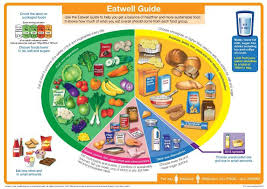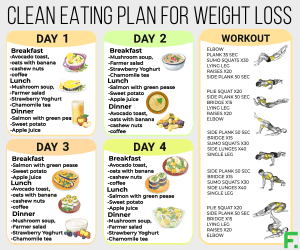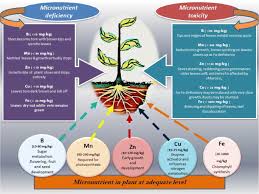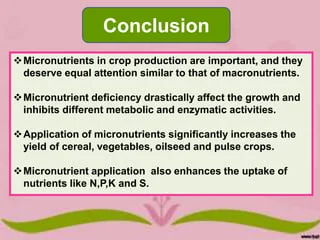In general, vitamins and minerals are referred to as micronutrients.
Conversely, macronutrients consist of carbs, lipids, and proteins.
Compared to macronutrients, your body requires fewer micronutrients. For this reason, they are called “micro.”
Since the majority of vitamins and minerals cannot be produced by the body, humans must get them from their diet. They are also known as vital nutrients for this reason.
Vitamins are organic substances produced by both plants and animals that can be decomposed by air, heat, or acid. Conversely, minerals are inorganic, found in water or soil, and incapable of decomposition.
You ingest the minerals that plants and animals absorbed or the vitamins that they produced when you eat.
Since every food has a varied micronutrient content, it is advisable to eat a range of foods to ensure that you are getting enough vitamins and minerals.
Since every vitamin and mineral has a distinct function in your body, a sufficient intake of all micronutrients is required for optimum health.
Growth, immunological response, brain development, and many other critical processes depend on vitamins and minerals.
Certain micronutrients also contribute to the prevention and treatment of disease, depending on their role .

Types of Micronutrients
Water-soluble vitamins, fat-soluble vitamins, macrominerals, and trace minerals are the four types of vitamins and minerals.
No matter what kind they are, vitamins and minerals interact in numerous bodily functions and are absorbed in comparable methods.
Water-soluble vitamins
The majority of vitamins are referred to as water-soluble since they dissolve in water. When taken in excess, they are flushed out of your body with urine since they are difficult to keep.
Although each water-soluble vitamin has a distinct purpose, they are all connected.
The majority of B vitamins, for instance, function as coenzymes that aid in initiating significant chemical reactions. The creation of energy requires many of these processes.
The following are some of the roles of the water-soluble vitamins:
The water-soluble vitamins — with some of their functions — are:
- Vitamin B1 (thiamine): Helps convert nutrients into energy .
- Vitamin B2 (riboflavin): Necessary for energy production, cell function and fat metabolism.
- Vitamin B3 (niacin): Drives the production of energy from food .
- Vitamin B5 (pantothenic acid): Necessary for fatty acid synthesis .
- Vitamin B6 (pyridoxine): Helps your body release sugar from stored carbohydrates for energy and create red blood cells .
- Vitamin B7 (biotin): Plays a role in the metabolism of fatty acids, amino acids and glucose .
- Vitamin B9 (folate): Important for proper cell division.
- Vitamin B12 (cobalamin): Necessary for red blood cell formation and proper nervous system and brain function.
- Vitamin C (ascorbic acid): Required for the creation of neurotransmitters and collagen, the main protein in your skin .
As you can see, water-soluble vitamins serve a variety of purposes in addition to being crucial for energy production.
Your body cannot store these vitamins, therefore it’s critical to consume enough of them through diet.
Water-soluble vitamin sources and Adequate Intakes (AIs) or Recommended Dietary Allowances (RDAs) are

Fat-soluble vitamins
Fat-soluble vitamins do not dissolve in water.
They’re best absorbed when consumed alongside a source of fat. After consumption, fat-soluble vitamins are stored in your liver and fatty tissues for future use.
The names and functions of fat-soluble vitamins are:
- Vitamin A: Necessary for proper vision and organ function .
- Vitamin D: Promotes proper immune function and assists in calcium absorption and bone growth .
- Vitamin E: Assists immune function and acts as an antioxidant that protects cells from damage .
- Vitamin K: Required for blood clotting and proper bone development .
Sources and recommended intakes of fat-soluble vitamins are

Health benefits of micronutrients
Each and every micronutrient is crucial to your body’s healthy operation.
Getting enough of the various vitamins and minerals is essential for good health and may even aid in the battle against illness.
This is due to the fact that micronutrients are involved in almost all bodily functions. Additionally, some minerals and vitamins have antioxidant properties.
Certain disorders, such as cancer, obesity, and heart disease, have been linked to cell damage, which antioxidants may help prevent.
An appropriate dietary intake of vitamins A and C, for instance, has been associated in studies with a decreased risk of developing some cancers (35Trusted Source, 36Trusted Source).
It may be possible to slow the progression of Alzheimer’s disease by eating a diet high in iron and copper
Additionally, several minerals might help prevent and treat illness.
Low blood selenium levels have been connected in studies to an increased risk of heart disease. An earlier analysis of observational data revealed that a 50% rise in blood selenium concentrations reduced the incidence of heart disease by 24%.
According to these research, there are numerous health advantages to getting enough amounts of all micronutrients, particularly those with antioxidant qualities.
However, it’s uncertain if there are any extra advantages to ingesting more of these micronutrients than are advised, either through food or supplements.

Micronutrients deficiencies and toxicities
Micronutrients are needed in specific amounts to perform their unique functions in your body.
Getting too much or too little of a vitamin or mineral can lead to negative side effects.
Deficiencies
Most healthy adults can get an adequate amount of micronutrients from a balanced diet, but there are some common nutrient deficiencies that affect certain populations.
These include:
- Vitamin D: Many Americans are deficient in vitamin D, mostly due to lack of sun exposure (39Trusted Source).
- Vitamin B12: Vegans and vegetarians may develop vitamin B12 deficiency from refraining from animal products. Elderly individuals are also at risk due to decreased absorption with age (40Trusted Source, 41Trusted Source).
- Vitamin A: The diets of women and children in developing countries often lack adequate vitamin A (42Trusted Source).
- Iron: Deficiency of this mineral is common among preschool children, menstruating women and vegans (43Trusted Source, 44Trusted Source).
- Calcium: Close to 22% and 10% of men and women over 50, respectively, don’t get enough calcium (45Trusted Source).
The signs, symptoms and long-term effects of these deficiencies depend on each nutrient but can be detrimental to the proper functioning of your body and optimal health.
Toxicities
Micronutrient toxicities are less common than deficiencies.
They are most likely to occur with large doses of the fat-soluble vitamins A, D, E and K since these nutrients can be stored in your liver and fatty tissues. They cannot be excreted from your body like water-soluble vitamins.
A micronutrient toxicity usually develops from supplementing with excess amounts — rarely from food sources. Signs and symptoms of toxicity vary depending on the nutrient.
It’s important to note that excessive consumption of certain nutrients can still be dangerous even if it does not lead to overt toxicity symptoms.

Conclusion


